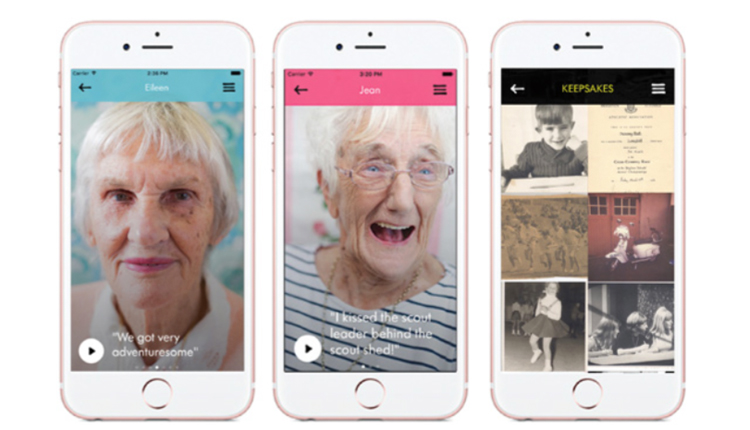Giddy is a brilliant new resource which, through oral history, explores teenage memories from the post-war years in Brighton & Hove.
The app itself is a delight. You can listen to numerous people reminiscing about their youth.
The Giddy Team worked with Longhill High School in Brighton across one academic year, inviting a group of year 10 students studying GCSE History to play an active role in developing the Giddy App.
One of the most exciting things about the Giddy App for me is the way that it provides a brilliant framework for an oral history project. You see how powerful the results can be by spending five minutes listening to some of the stories.

The teacher toolkit gives you a clear and simple guide on how to use the app.
If you do want to conduct your own oral history project, the Giddy Guide is here:
What is oral history?
Oral history is the collection and study of historical data, and personal opinion gathered from original interviews with real people who have personal experience and knowledge of past events. These are actual interviews that have been recorded using digital or analogue recording technology, and so only available for recent history.
Who to Interview
Once you define your topic, and your time period, you will have a clearer idea of who you would like to talk to. Very often, family friends and relatives will be keen to take part. Our Giddy research led us to Grandparents, local history & reminiscence clubs for older people, community groups such as a café for the over 50s, and care homes.
Many of the people we interviewed for the Giddy project felt sure that their lives and experiences would have little to offer of interest, but as Giddy shows, this is never the case. Offer reassurance to your subject by explaining why their memories are important to you.
Where to Interview
Even the best sound recording equipment will pick some background noise, so try and find a quiet location. Try to set up the space so it is comfortable and informal, so your subject feels relaxed, as this helps people to feel like chatting.
You can also choose to interview people at their home. This will help your subject feel more relaxed, and if they suddenly remember they have a photo or artefact relating to what they are talking about, they can get it.
Please ensure though, that you never visit a stranger’s house on your own. It may also be advisable to ask older people, who may feel more vulnerable to be accompanied by a friend or relative.
How to Interview
A good interviewer has a clear understanding of the topic or subject they are hoping to discuss, so it’s important to do some background research. The students who led the Giddy interviews visited archives and museums and learnt about the period they were investigating before starting any interviews.
Learn the difference between open and closed questions. An open question will encourage conversation, whilst a closed question will generally stop it.
Prepare a list of interview questions designed to help you find out the information you are after, but be prepared to be flexible and allow for unexpected and interesting stories.
Some people love to talk, and this can be a problem if you are limited with time. You don’t want to end up with hours of audio that you are expected to edit to a few minutes. One way to avoid this is to be clear with your interviewee how long you have, and how long the final audio will be.
Try to be intuitive as to when its time to ask the next question so you move things along, and when to let your subject go on talking. You may also want top have some prompts ready such as ‘can you tell me more about that?’ or ‘what was that like for you?’
Equipment
Whatever equipment you use, make sure you know how to use it, and have tested it before you start. Most smart phones now have audio recorders that record MP3 files to a pretty good, usable standard.
If you want professional standards because you are planning on presenting the audio to others (perhaps on a website, or for an exhibition), then you can hire sound recording equipment, or buy it from around £100. Be aware you may also need a microphone (mic) and headphones, and possibly also a mic clip or mic stand.
Sensitivity
Recalling memories of people, places and events from the past is incredibly personal and potentially very powerful, and may unexpectedly trigger strong emotions. Be sensitive to the needs of your subject. They may want to take a break, or need a tissue.
Permissions
Whenever you record a person’s memories and personal stories, it is advisable to gain permission in writing from that person. If you intend to repeat, share or publicly present any of the material, then the written permission needs to include details of your intentions.
For more advice on all of the above
The Oral History Society is a good place to start. www.ohs.org.uk
Timings
I can’t think of a better way to teach the second half of the 20th century at Key Stage 3. In my experience many schools get bogged down in the first half of the twentieth century with wars, rich and powerful white men and death. They rarely get past 1945!
I would recommend spicing up your curriculum by bringing in some real local and social history and Giddy provides the guidance and ideas to do just that. The results could be amazing.




